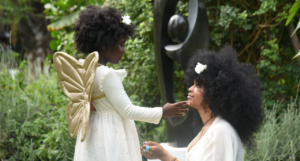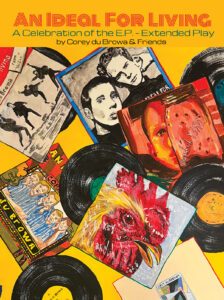“What one rum can’t do, three rums can”
– Don Beach
Johnny Quong’s The Hawaiian
When I was a kid, I was a pretty picky eater. We lived in Salt Lake City for four years in the early 1970s, and on the rare occasion that we went out to eat, the one place that I was always OK with was Johnny Quong’s The Hawaiian. I actually don’t remember much about the food – it was Chinese food – but I do remember the place. It was like entering into a movie set. Bamboo, thatched roofs, rattan, and (fake) palm trees. Several times a night the lights would flash, followed by the loud crack of thunder. Then a sprinkler system would spray water down onto the ‘roofs’ that made it feel like you were in the middle of a Polynesian tropical storm. In Salt Lake at the time, you could only buy alcohol from a State Liquor Store (mini bottle State Liquor stores were located in most restaurants) and we would get these wild alcohol-free tropical cocktails in Tiki mugs, then my parents would walk over to the window and buy a couple of mini bottles of rum and pour them into their drinks themselves. It was magical.
Fast forward to 2020. I started making a cocktail a day when we hit the COVID lockdown phase and made my way into a couple of Tiki recipes after several months, and really had fun with them. They are very complicated and complex, and that wound up being part of the fun for me. The drinks immediately brought me back to Johnny Quong’s, but while the drinks at the Hawaiian were syrupy, sticky and overly sweet, these were complex and multi-layered, and held their own against the classic cocktails I was making. I was drawn to them as a mini COVID escape and had so much fun I ended up falling into a routine of making one Tiki a week on Tuesday (Tiki Tuesday). It was fun – but also a way to escape the crushing around-the-clock pandemic news, and a way to deal with the fact that all of our vacation plans for the year had been ruined. Which is ironic because that is why the Tiki movement started in the first place.

Ernest Raymond Beaumont Gantt, aka Don Beach
Rewind to the late1920s in America. Ernest Raymond Beaumont Gantt had just blown through his college savings on travel throughout the Caribbean. During the 1920s Gantt spent the summers helping his grandfather with his shipping company, where shipments throughout the Caribbean returned home with unregistered cargo – rums from the islands for grandpa’s bootlegging operations. In 1927, his parents gave him the choice to go to college or spend his college funds any way he chose. He chose adventure, returning again to the Caribbean and eventually making his way to the South Pacific, returning home with two valuable assets: an extensive knowledge of Caribbean rums and drink recipes, and a vast collection of island nick-nacks as souvenirs. Gantt has an interesting – and totally unreliable, thanks to his own story-telling – origin story, but that will have to wait for a later time. Suffice to say, by the time he returned home he had all the knowledge he needed to start a cocktail bar, and more than enough stuff to decorate it.

The Original Donn’s Beachcomber
So, in 1933 he moved into a vacated tailor shop in Hollywood, built a bar, hung up all of his relics, and opened Don’s Beachcomber. It was a tiny 13 by 30 foot, 25 seat bar, but it was a paradise no one had ever experienced before. Today the move would be castigated, and the bar picketed for cultural appropriation (today Tiki bars still in operation are beginning to transition to ‘Tropical’ bars and losing the indigenous iconography). The drinks, his “Rhum Rhapsodies,” were basically riffs on the Caribbean libations – Planter’s Punch and Daiquiris at their base, and the food (post-prohibition laws required food to be served in drinking establishments) started as simple Cantonese finger food. But the message sent was that you were in some far-away local Polynesian island watering hole.
Call him genius, call him lucky, but It was just what America needed. The annexation of Hawaii (and the fascination of that magical island) in 1900 was still fresh in everyone’s mind, Prohibition had just ended, America was mired in the Great Depression, and few were working. Everyday life was hard, grim, and just a little hopeless. But step a few feet off the sidewalk on Hollywood Boulevard, through the gates, and you were transported to a far-away land where Filipino boys mixed up exotic drinks with dangerous names. The drinks were called exotic cocktails at the time – it would take several more decades for the Tiki name to be born – and they assaulted all yours senses. Gantt created his early, and some say his best, drinks within the first several years of opening the bar. The Cobra Fang, the Vicious Virgin, the Missionary’s Downfall, and the king of all, the Zombie. They were amazing to look at and hit your nose before your lips ever touched the glass. And the taste – like nothing anyone had ever drank.

Interior of Donn the Beachcomber Bar, 1947
Gantt used his connections and bootlegging knowledge to scour the Caribbean for the very best and undervalued rums that formed the foundation of his drinks. When Prohibition ended, there was no whiskey industry to speak of – and it would take years to rebuild it. But rum production never stopped and was literally hours away by boat from America. Today we think of Tiki drinks as sickeningly sweet and sour with paper umbrellas, but that was the last gasp of the Tiki movement, when bar owners had spent decades simplifying recipes and substituting inferior ingredients. Gantt used only the highest grade rums, liqueurs, fresh fruit, and spices. If you have ever had a real craft exotic cocktail, you understand that they are a work of art. Each sip has a beginning, a middle, and an end, creating dizzying complexity. But with each taste your bare feet touch the sand, you smell the salt air, and feel the surf on your face. The fact that the storybook locale that Gantt was selling didn’t really exist – it was a little Caribbean, a little Hawaii, a little China, and a little Tahiti thrown into a blender with crushed ice and whipped up together – didn’t matter. You were not where you woke up or worked, and that’s what people really needed.

Don Beach – later in life while living in Hawaii
And Gantt? His Donn’s Beachcomber soon outgrew its space and moved across the street and became Don the Beachcomber Bar, and within a few years others dotted the globe. His model was copied so many times that they, like a photocopy of a photocopy, soon became a ghost of the original. He grew tired of people asking if he was Donn, and eventually changed his name to Don Beach. Which was likely his plan the whole time. He was a storyteller and raconteur, and the older he got, the more he believed the fabricated image and stories he had crafted. But man, could he make a drink.
Cheers to a better 2021!
- Bill Stott
AotCB-022
Instagram@architecture_of_the_cocktail
Other RUMinations in Architecture of the Cocktail:
HAVE YOU EVER HAD A REAL DAIQUIRI? by Bill Stott
The Golden Age of Cocktails, by Bill Stott
Hogo! by Bill Stott
How about a nice Hawaiian punch? by Bill Stott
“What one rum can’t do, three rums can” by Bill Stott
Yo, ho, ho, and a Bottle of Rum, by Bill Stott
Yo, ho, ho, and a Bottle of Rum – Part II, by Bill Stott
Spirits Up! Black Tot Day, by Bill Stott



